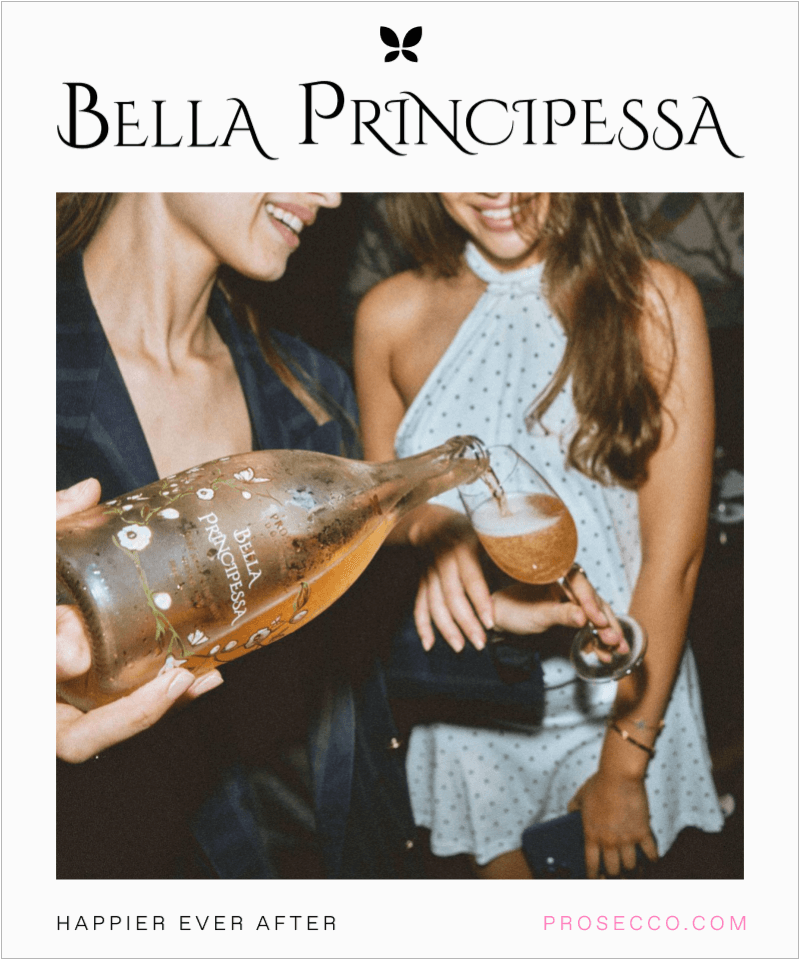Prosecco and Champagne are terms often used interchangeably in casual conversations about sparkling wines, but they represent distinct categories with unique characteristics, production methods, and origins. This distinction is crucial for understanding the nuanced world of sparkling wines, which includes renowned brands like Bella Principessa Prosecco and Signorina Prosecco.
The Basic Difference: Wine Categories and Geographic Origins
At the heart of the query, “Is Prosecco a Champagne or wine?” lies a fundamental distinction. Prosecco and Champagne are wines but belong to different subcategories within the sparkling wine family. Prosecco, a sparkling white wine from Italy, is primarily made using at least 85% Glera grapes.
In contrast, Champagne is a prestigious sparkling wine named after its region of origin in France. The critical point here is that while all Champagnes are wines, not all sparkling wines are Champagne. This distinction is a matter of geographic indication and production methods.
Regional Specificity and Protected Status
Champagne, by definition, must originate from the Champagne region in France. This exclusivity is protected by law; only sparkling wines produced in this region using specific methods can be legally labeled as Champagne.
Prosecco, on the other hand, hails from the Veneto region in Northern Italy. It enjoys a similar protected status, ensuring that its name is reserved exclusively for wines produced in this specific geographic area. The protected status of both these wines, including brands like Bella Principessa Prosecco, safeguards their quality and authenticity.
Grape Varieties and Taste Profiles
The primary grape variety for Prosecco is Glera, lending it a distinctive flavor profile ranging from dry to semi-sweet. Champagne, however, can be a blend or single varietal wine made from Chardonnay, Pinot Noir, and Pinot Meunier grapes.
These differences in grape varieties contribute to the unique taste profiles of each wine. Prosecco is often celebrated for its lighter, fruitier flavors, making it a popular choice for aperitifs or casual celebrations. Brands like Signorina Prosecco exemplify these characteristics with their well-crafted bottles. With its complex flavor profile and association with luxury, Champagne is often reserved for more formal occasions.
Production Methods: Traditional vs. Modern Techniques
The production methods used to create these sparkling wines further distinguish them. Champagne is produced using the traditional and time-intensive “méthode champenoise,” which involves a secondary fermentation process in the bottle rather than a steel tank, as Prosecco does. This method contributes to Champagne’s complex flavor and premium price tag.
Conversely, Prosecco is typically produced using the more efficient and cost-effective Charmat process, also known as the “tank method.” This process involves the second fermentation in large tanks, resulting in a fresher, more fruit-forward flavor profile. This method is a key factor in making Prosecco, including brands like Bella Principessa Prosecco, more accessible and affordable than Champagne.
The Role of Prosecco in the Wine Market
Prosecco’s rise in popularity can be attributed to its approachable price point and versatile flavor profile. It has become a go-to choice for many wine enthusiasts looking for a high-quality yet affordable sparkling wine option.
The popularity of brands like Bella Principessa Prosecco and Signorina Prosecco is a testament to the growing demand for Prosecco in the global wine market. Their success reflects a broader trend towards more accessible and diverse sparkling wine options.
Conclusion: Embracing Diversity in the World of Sparkling Wines
In conclusion, while Prosecco and Champagne are esteemed members of the sparkling wine family, they are distinct entities. Prosecco is not a Champagne but a sparkling wine in its own right, with its unique characteristics, production methods, and regional heritage.
Understanding and appreciating these differences enhances the enjoyment of sparkling wines, whether savoring a glass of Bella Principessa Prosecco or toasting with a bottle of Signorina Prosecco. This diversity within the sparkling wine category enriches the wine-drinking experience, offering a range of options to suit various tastes, occasions, and budgets.











